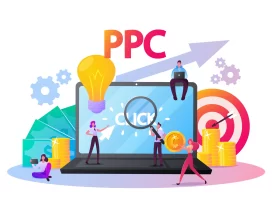
Gig Economy – Adapting to a Changing Workforce
Workers increasingly desire independence, flexibility and autonomy from their work environment – gig work can provide one way of accomplishing this goal.
Gig workers are freelancers, independent contractors, or contract firm employees hired on an as-needed basis to meet companies’ varying demands for staff. Payment typically occurs via an online platform.
Adapting to a Changing Workforce
The gig economy is rapidly revolutionizing how businesses and workers interact. This emerging business model involves short-term work engagements arranged quickly via app-based technology platforms; such as Uber, Airbnb or DoorDash services. It comprises freelancers as well as on-demand service companies such as these.
Gig workers enjoy flexibility and autonomy, which may appeal to individuals seeking to balance family responsibilities or pursue educational opportunities while diversifying their skillset and gaining various forms of work experience.
Businesses benefit from adopting this model because it reduces overhead costs while quickly providing expert talent to them. But its constant change can present workplace culture challenges due to staff changes; this may cause disruption and inhibit employee retention efforts. It may also increase competition for skilled freelancers; this competition can be overcome by offering contractors onboarding training so that they integrate fully into your team.
Developing a Gig Economy Strategy
Millions of workers no longer view themselves as tied down to one employer or stuck in an oppressive nine-to-five job; instead they desire balance and independence in their careers. This shift has its origins in factors such as new technologies and shifting regulations that impact worker status.
Gig work can provide workers with a lucrative source of income while also giving them an outlet to pursue their passions, gain skills and work on projects that don’t always fit within a full-time employment schedule. Businesses should ensure their talent management practices enable agility and provide opportunities for gig work within their organizations.
COVID-19’s pandemic forced those relying heavily on freelance jobs for income to reassess their priorities and decide whether independent work was the right option for them. For others, lack of traditional employment options combined with financial pressures have forced them into gig work to supplement their regular incomes.
Developing a Gig Economy Marketing Strategy
Marketing to the Gig Economy must focus on finding your target customer base. This may involve targeting contractors, freelancers or remote workers with specific skillsets; alternatively it could include potential employees who value gig work’s flexibility as employment options.
On-demand workers are an attractive solution for businesses that must quickly respond to customer demand. Home service companies use agency carers during busy periods and hospitals hire locum nurses when there are short staffing gaps.
Some individuals join the gig economy to improve their work-life balance; others do it out of financial necessity as they cannot afford a full-time salary alone. No matter their motivations for joining, this rapidly emerging sector of American finance is altering how Americans earn and spend their money; its prevalence will only continue to expand over time; therefore it is imperative for business leaders to devise an adaptable Gig Economy marketing strategy in response to such shifts.
Developing a Gig Economy Operations Strategy
Many workers opt for gig work due to its freedom and flexibility; indeed, this factor was frequently mentioned among those who said they would switch their permanent position for something in the gig economy.
Though flexible work offers its share of benefits, it also creates challenges for companies. A changing workforce necessitates developing an effective operations strategy in order to remain profitable.
One of the greatest challenges involves managing an unpredictable team that may change in an instant, while maintaining effective communication and collaboration is increasingly necessary.
Navigating the complex regulations surrounding independent contractor status remains difficult. Depending on your state and company, classification can impact benefits access, taxation rates and even access to benefits. Some businesses are providing solutions such as Stride which allows independent contractors to carry their insurance from job to job for more effective management of both their work and finances.








